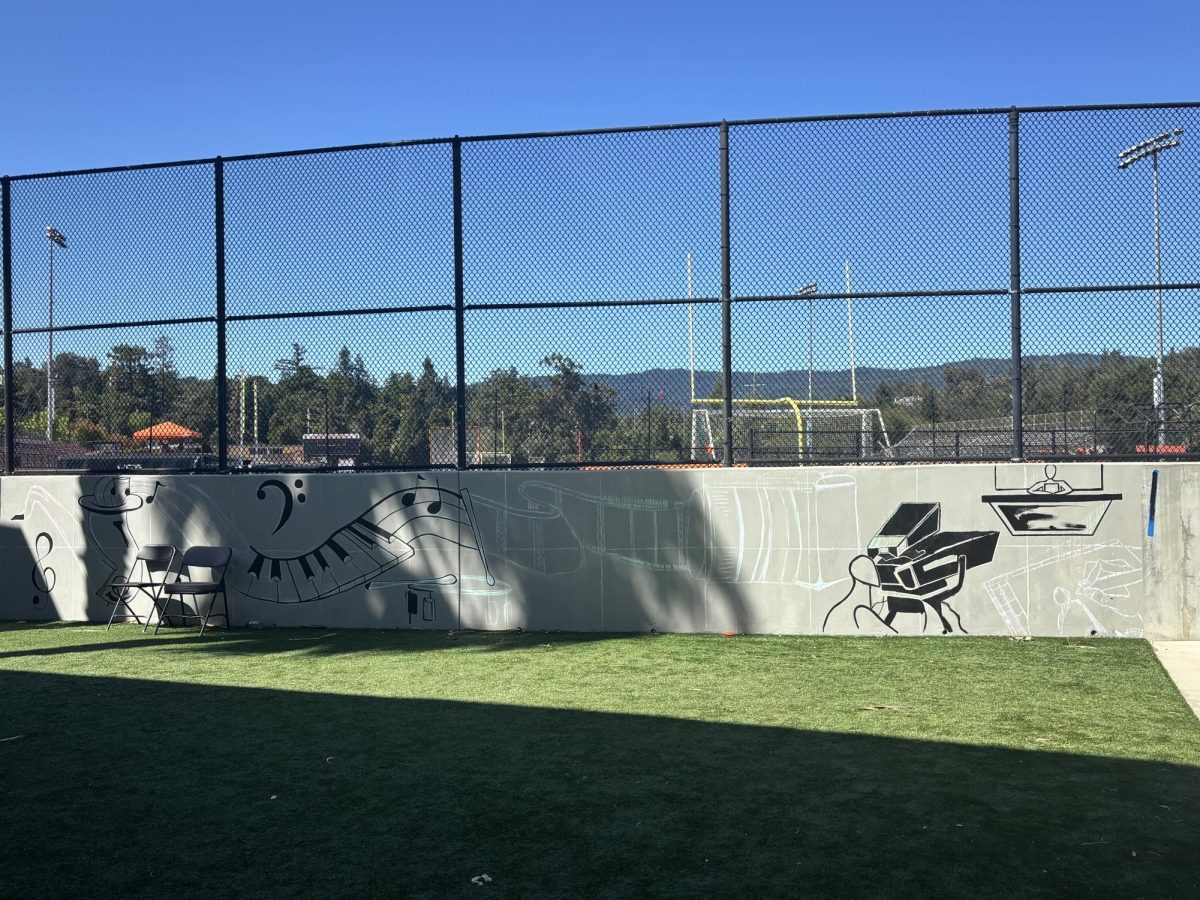The sharp ring of the fire alarm spreads across the school, creating a cacophony of noise, while the lights on the alarms are flashing, jumping the school into action. But, instead of creating the intended urgent reaction, the alarms spike annoyance from students and staff alike.
At around 1:30 p.m., Sept. 15, the fire alarm went off for the third time this school year. Within 10 minutes, all students were out of their classrooms and on Bradley Field. According to the Big 5 guidelines, the fire procedure Woodside follows, evacuation is the procedure if there’s a fire, getting students and staff to safely reach a safe location. Woodside has already evacuated twice this school year, one alarm being called off as a false alarm without an evacuation, and the other two false alarms being carried out as evacuation drills. The first alarm of the year was due to a student, but it was not an intentional pull, according to Administrative Vice Principal Chuck Velschow, and resulted in an evacuation to Bradley Field. The second was quickly dismissed, with students and staff being told to stay in their classrooms, and there was another evacuation after the last alarm went off.
“[The most recent alarm was] some kind of mechanical malfunction. Yesterday, [Sept. 15] … at about 6:30 a.m., the fire alarm had started to go off inadvertently,” Velschow said. “So [we] called up the sound and signal, and they were working on it. They got it to shut off sometime around 7:15 a.m. … and then it started going off again around 1:30 p.m.”
The alarm went off during tutorial, a time for students to complete work and to meet with teachers in order to get help with classes. Students often use this time to make up any missed tests or get extra time to study, like junior Shavin Perera.
“I was actually writing one of my AP English Language essays because I was sick the day that we were supposed to write it,” Perera said. “I came in at the very start of lunch and started writing my essay. During tutorial, the fire bell started to ring, and it was chaos. I wasn’t able to finish my essay, and I had to stay after school and skip out on some stuff I was supposed to do.”
When there is a fire alarm, the administration checks the site of the alarm and, if it’s a false alarm, they then decide whether to call off the evacuation or follow through. If the fire department is present, the administration can have them clear the school, then use the evacuation drill as one of the two state-mandated yearly fire drills. This is what happened on Monday: the administration decided to follow through and use it for one of those drills.
“In the case of false alarms, … I think it has a real negative impact on the learning environment,” social studies teacher Kayla Dice said. “It’s really hard to get students back focused after walking to the field, or even if we’re told to stay in our rooms, it can peak anxiety and be a distraction.”
The false alarms have disturbed the schedule of learning and school, but they have also had other significant impacts.
“I think that [the frequent alarms] desensitized us in the event of a real emergency, that’s pretty concerning,” Dice said. “They’re a distraction and a real negative on the learning environment for our students. Also, the physical work and the wasted resources in the event of not a real emergency, … I would hate to see resources being used here that could be used for real emergencies.”
Velschow says that part of the cause for the false alarms is the new intercom and speaker system that was installed over the summer, but that it could also have to do with the fire system using old wiring. Fixing that and seriously changing the fire alert system would likely take a lot of resources.
“I think that [false alarms do] happen quite often, but I don’t think there’s much we can do,” Perera said. “I don’t feel that there’s a way that we can replace the fire alarms we have now, … it would be very expensive.”







